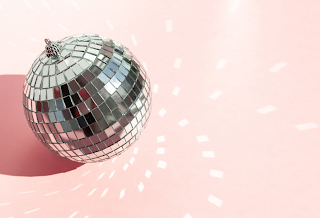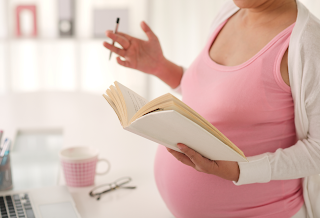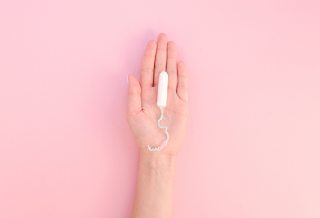20 Terms To Know if You're Having a Baby in 2020
Are these all of the important terms you'll come across during your pregnancy and birth? Not even close! Take a childbirth class for that. But these are some concepts that have been gaining momentum lately, so you will definitely want to be familiar with them if you're having a baby in 2020.
Here goes:
1. Augmentation of labor
Helping labor progress more rapidly, once it's begun on its own. Often, "breaking the waters" or Pitocin is used to make contractions stronger, longer, and closer together.
2. Baby Blues
Feelings of sadness and moodiness after childbirth. Happens up to 80 percent of the time! It's caused by postpartum hormones and the natural slump after the excitement of birth. Baby Blues can start 2 to 3 days postpartum and can last up to 2 weeks. Anything longer could be something else going on, including Postpartum Depression (see below).
Feelings of sadness and moodiness after childbirth. Happens up to 80 percent of the time! It's caused by postpartum hormones and the natural slump after the excitement of birth. Baby Blues can start 2 to 3 days postpartum and can last up to 2 weeks. Anything longer could be something else going on, including Postpartum Depression (see below).
3. Birth Plan
The written (or illustrated) preferences and wishes of the birthing person for their birth and baby. It includes their preferences about medication, their environment, and who they want present, among other things. Other terms used are "Birth Preferences" and "Birth Wishes". Take our birth class to make yours.
The written (or illustrated) preferences and wishes of the birthing person for their birth and baby. It includes their preferences about medication, their environment, and who they want present, among other things. Other terms used are "Birth Preferences" and "Birth Wishes". Take our birth class to make yours.
4. Colostrum
The milk produced by the mammary glands in late pregnancy and the first few days after giving birth. While this thick, sticky, yellow substance is small in quantity, it packs a punch! It has high concentrations of nutrients and antibodies to protect the newborn against disease.
The milk produced by the mammary glands in late pregnancy and the first few days after giving birth. While this thick, sticky, yellow substance is small in quantity, it packs a punch! It has high concentrations of nutrients and antibodies to protect the newborn against disease.
5. Diastasis Recti
A condition in which there's a gap in the abdominal muscles, resulting in a belly "pooch", even months after giving birth. Working with a physical therapist and adjusting your workouts can help minimize or close the separation.
A condition in which there's a gap in the abdominal muscles, resulting in a belly "pooch", even months after giving birth. Working with a physical therapist and adjusting your workouts can help minimize or close the separation.
6. Doula
A professional that is employed to provide education, comfort, and support during pregnancy and birth. Some doulas will also provide at-home assistance after the baby is born.
Learn more about Birth Doulas here Learn more about Postpartum Doulas here
A professional that is employed to provide education, comfort, and support during pregnancy and birth. Some doulas will also provide at-home assistance after the baby is born.
Learn more about Birth Doulas here Learn more about Postpartum Doulas here
7. Hyperemesis Gravidarum
A severe form of "morning sickness" characterized by extreme and frequent nausea and vomiting during pregnancy, sometimes leading to dehydration and hospitalization.
A severe form of "morning sickness" characterized by extreme and frequent nausea and vomiting during pregnancy, sometimes leading to dehydration and hospitalization.
8. Induction of Labor
Using artificial means, such as Pitocin, prostaglandins, or by "breaking the waters" to start labor.
Using artificial means, such as Pitocin, prostaglandins, or by "breaking the waters" to start labor.
9. Kegels
An exercise that strengthens the pelvic floor muscles, the muscles at the base of the pelvis that support the uterus, bladder, small intestine and rectum. This simple exercise can prepare the area for pregnancy, vaginal birth, and reduce urinary incontinence postpartum. To do them, relax and tighten the muscles that control urine flow.
An exercise that strengthens the pelvic floor muscles, the muscles at the base of the pelvis that support the uterus, bladder, small intestine and rectum. This simple exercise can prepare the area for pregnancy, vaginal birth, and reduce urinary incontinence postpartum. To do them, relax and tighten the muscles that control urine flow.
10. Lactation Specialist
A person trained to assist in feeding a baby breast milk. They can help with a variety of breastfeeding problems, such as latching difficulties, painful nursing, and low milk production. "Lactation Specialists" includes a variety of titles, but there is varying expertise, with the highest credential being an IBCLC. IBCLC stands for International Board Certified Lactation Consultant CLC stands for Certified Lactation Counselor (Get a home visit with a CLC here.)
A person trained to assist in feeding a baby breast milk. They can help with a variety of breastfeeding problems, such as latching difficulties, painful nursing, and low milk production. "Lactation Specialists" includes a variety of titles, but there is varying expertise, with the highest credential being an IBCLC. IBCLC stands for International Board Certified Lactation Consultant CLC stands for Certified Lactation Counselor (Get a home visit with a CLC here.)
11. Mastitis
An infection of a milk duct in the breast. Symptoms include swelling, pain, redness, and warmth. There might also be fever and chills.
An infection of a milk duct in the breast. Symptoms include swelling, pain, redness, and warmth. There might also be fever and chills.
12. Midwife
A health care professional who provides gynecological examinations, contraceptive counseling, prescriptions, and labor and delivery care. In addition to working at hospitals, midwives can work in birth centers or attend home births. Certified Nurse-Midwife (CNM): A nurse who has completed graduate-level programs in midwifery and is licensed by the state. Certified Professional Midwife (CPM): A direct entry midwife who is certified by the North American Registry of Midwives (NARM). CPMs generally assist only in home births.
A health care professional who provides gynecological examinations, contraceptive counseling, prescriptions, and labor and delivery care. In addition to working at hospitals, midwives can work in birth centers or attend home births. Certified Nurse-Midwife (CNM): A nurse who has completed graduate-level programs in midwifery and is licensed by the state. Certified Professional Midwife (CPM): A direct entry midwife who is certified by the North American Registry of Midwives (NARM). CPMs generally assist only in home births.
13. Non-Stress Test (NST)
A prenatal test used to check on a baby's health while inside the uterus. The pregnant person is hooked up to a fetal monitor and the response of the fetal heart rate to fetal movements is observed.
A prenatal test used to check on a baby's health while inside the uterus. The pregnant person is hooked up to a fetal monitor and the response of the fetal heart rate to fetal movements is observed.
14. Oxytocin
The love hormone! It stimulates contractions and the milk-eject reflex, but also plays a big role in social bonding and sexual pleasure. Pitocin is the brand name of a synthetic form of the hormone oxytocin used to induce labor, strengthen contractions, and/or control bleeding after birth.
The love hormone! It stimulates contractions and the milk-eject reflex, but also plays a big role in social bonding and sexual pleasure. Pitocin is the brand name of a synthetic form of the hormone oxytocin used to induce labor, strengthen contractions, and/or control bleeding after birth.
15. Peanut Ball
A tool for promoting labor progress. It was first used in physical therapy offices, but it's now also used during labor and birth. It has an oblong, peanut-shell shape that dips in the center.
A tool for promoting labor progress. It was first used in physical therapy offices, but it's now also used during labor and birth. It has an oblong, peanut-shell shape that dips in the center.
16. Placenta Encapsulation
Is the practice of ingesting the placenta after it has been dehydrated, ground, and placed into pills. Traditionally, this is taken by the birth parent and is believed to have numerous benefits, including hormone regulation and a healthy milk supply. There is currently no evidence to support these claims, yet many parents swear by it!
Is the practice of ingesting the placenta after it has been dehydrated, ground, and placed into pills. Traditionally, this is taken by the birth parent and is believed to have numerous benefits, including hormone regulation and a healthy milk supply. There is currently no evidence to support these claims, yet many parents swear by it!
17. Postpartum Depression
More severe than the more common baby blues. Characterized by frequent crying, irritability, sleep problems, restlessness, feelings of hopelessness and the inability to care for the baby. Professional treatment is beneficial.
More severe than the more common baby blues. Characterized by frequent crying, irritability, sleep problems, restlessness, feelings of hopelessness and the inability to care for the baby. Professional treatment is beneficial.
18. Postpartum Psychosis
Much rarer and more serious than postpartum depression. Symptoms include loss of reality, hallucinations or delusions, as well as suicidal or violent thoughts. Professional treatment is needed immediately.
Much rarer and more serious than postpartum depression. Symptoms include loss of reality, hallucinations or delusions, as well as suicidal or violent thoughts. Professional treatment is needed immediately.
19. Rebozo
A long flat garment worn mostly by indigenous women in Mexico and parts of Central and South America. Mexican culture has a long tradition of using the rebozo before, during and after birth. A common use during labor is on the birthing person’s hips, using controlled motions to help sway the hips side to side, called "manteada".
A long flat garment worn mostly by indigenous women in Mexico and parts of Central and South America. Mexican culture has a long tradition of using the rebozo before, during and after birth. A common use during labor is on the birthing person’s hips, using controlled motions to help sway the hips side to side, called "manteada".
20. Vaginal Birth After Cesarean (VBAC)
The vaginal birth of a baby after the birthing person has previously had a cesarean for a prior pregnancy.
That's a wrap! If you're having a baby this year, don't forget to book your childbirth classes and hire your doula. Happy 2020!
The vaginal birth of a baby after the birthing person has previously had a cesarean for a prior pregnancy.
That's a wrap! If you're having a baby this year, don't forget to book your childbirth classes and hire your doula. Happy 2020!




Comments
Post a Comment